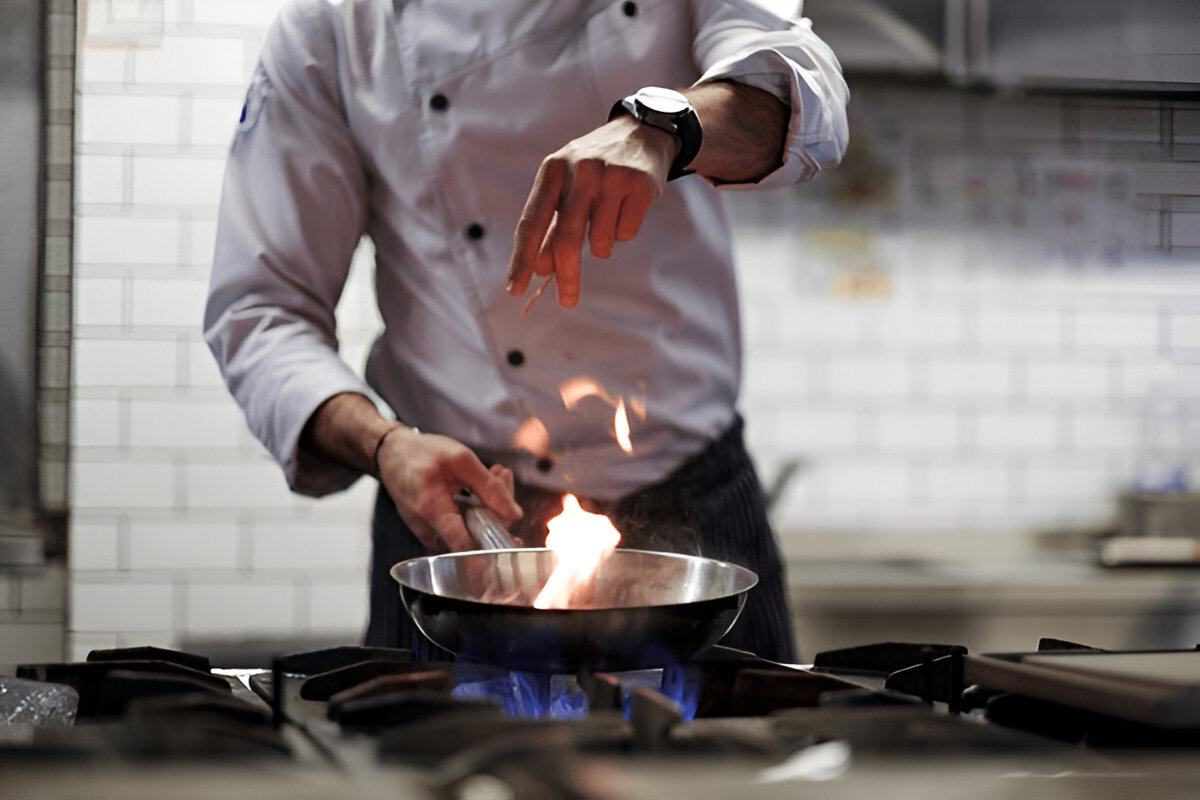Cooking with a stove is the very practical way to make meals. It’s not complicated and doesn’t need fancy tools which gives you control over heat and time. From boiling eggs to slow cooking the stove let you cook at your own pace. This article covers the basic tips and safety measures for cooking with a stove.
Why Stovetop Cooking Still Matters
Microwaves, air fryers and instant pots are everywhere but many homes rely on the stove for everyday meals for good reason. You can boil, fry, sauté, simmer or steam all with one heat source. It also allows you to adjust cooking style depending on the dish. Stove cooking gives you better texture and flavor control.
People who like to cook from scratch or try recipes from different cultures the stove is the best option. It works with any pot or pan and doesn’t require special accessories. It’s easy to clean up after use.
Getting Started: Gas vs Electric
There are mainly two types of stoves available in which one is gas and second is electric. Both have their own pros and cons.
Gas stoves heat up quickly and help you control the flame. They’re good for tasks that need fast changes in temperature like searing meat or stir-frying.
Electric stoves are slower to heat but more consistent once they’re hot. They’re better for simmering, slow cooking and baking on a stovetop.
Some homes do have induction stoves which are a third option. They heat only the cookware not the surface and are energy efficient. But you need special pans for those.
Essential Tools for Cooking with Stove
You don’t need much to get started. These are the basics:
- A frying pan or skillet
- A medium saucepan
- A large pot (for boiling pasta or making soup)
- Cooking utensils (spatula, wooden spoon, tongs)
- A lid for each pot or pan
- Oven mitts or thick cloth
- Timer
Having a clean towel nearby is also helpful. You’ll use it more than you think.
Basic Cooking Methods Using a Stove
Here’s how different cooking styles work on a stove.
1. Boiling
Just add water to a pot, put it on high heat and wait for bubbles. You can boil eggs, pasta, vegetables or potatoes. Use enough water so the food stays submerged. Add salt if needed.
2. Sautéing
This means cooking food quickly in a small amount of oil or butter. It’s good for onions, garlic, mushrooms and meat. Use medium heat and keep stirring so it doesn’t burn.
3. Simmering
Simmering is like boiling but on low heat. You’ll see small bubbles not a rolling boil. This is good for soups, sauces and stews. It helps flavors blend without overcooking.
4. Frying
For frying, heat oil in a pan and add food once the oil is hot. Too cold and the food gets soggy. Too hot and it burns. Use medium to high heat and avoid crowding the pan.
5. Steaming
Boil a small amount of water and place a steamer basket or metal colander above it. Cover the pot with a lid. This is useful for vegetables or dumplings. It keeps nutrients in and prevents overcooking.
Safety Tips While Cooking with Stove
Stoves are safe if use them in a right way but you should always be careful. Here’s what to keep in mind:
- Don’t leave the stove unattended when oil is heating
- Turn pan handles away from the front
- Use dry hands and cloths to handle hot items
- Make sure kids and pets stay away from the stove
- Turn off burners after use
- Clean up spills right away to prevent fires
Make sure your kitchen has good ventilation. For gas stoves it’s essential. An open window or exhaust fan helps remove smoke and extra heat.
Managing Heat Properly
High heat is not better for cooking so use medium to medium-high range. Only use high heat to boil water or sear meat quickly. Use low heat to keep food warm, simmer sauces or melt ingredients slowly.
Cooking Multiple Things at Once
If you’re cooking more than one dish at the same time then keep this in mind that
- Use the front burners for things you need to stir often
- Keep lids on for cooking
- If something is about to burn then take it off the heat immediately
- Prep ingredients in advance so you’re not rushing
Cleaning Up After
Let the stove cool before cleaning and wipe the burners and surrounding surface with a damp cloth. For grease you should use a mixture of baking soda and water. Clean pots and pans with hot soapy and for nonstick use a soft sponge. Check under the burners every week or so as grease may build up there and may cause smoke or fire.
Mistakes to Avoid
Here are some common mistakes people make when cooking with a stove:
- Heating oil too long without food in it
- Overcrowding the pan
- Cooking everything on high heat
- Not tasting food while cooking
- Forgetting to turn off burners
Avoiding these helps improve both safety and results.
Benefits of Cooking with Stove
- You can cook almost anything
- It’s cheaper than ordering food online
- It teaches you the patience
- You get to adjust with taste, spice and texture
- It helps you eat healthier and reduce waste
Even simple meals like rice, vegetables or scrambled eggs taste better when cooked right.
Final Thoughts
Cooking with stove is a basic skill that makes daily life easy. You don’t need to be an expert. Start with small projects. Make eggs, heat soup, cook pasta and easy foods. It’s not about making perfect meals. Stove is the best choice for making healthy food for yourself and family.
FAQs
1. Can I use a nonstick pan on a gas stove?
Don’t use high heat. Nonstick pans can get damaged if overheated. Use medium or low heat for best results.
2. What do I do if food burns on the stove?
Turn off the heat and remove the pan from the burner. If it’s badly burnt then let it cool and soak it before cleaning. Scrape off what you can but don’t use metal on nonstick pans.
3. Is cooking with a gas stove dangerous?
Not if used correctly. Always check for gas leaks and turn off the flame when done. Use ventilation for that exhaust fan helps.
4. How do I keep my stove clean every day?
Wipe it down after each use. Use a cloth with mild soap or a vinegar-water mix. Don’t let spills dry up and clean them when fresh to avoid buildup.


